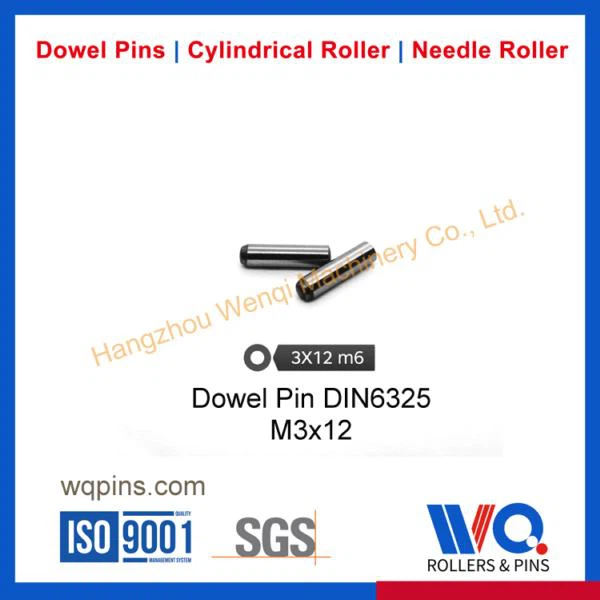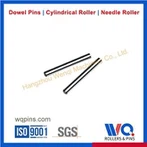Machine pins - also known as pin fasteners or fastening pins - are special fasteners used to properly align and connect two parts or assemblies together. Available in semi-permanent and quick-release models, these fasteners may require additional pressure or tooling to install and remove (ie, semi-permanent) or have a spring-loaded mechanism that locks them in place for easy installation and removal (ie, quick-release) .
In addition to the aforementioned features, these components are available in a variety of sizes and materials-including metal, plastic, and wood-with different designs to suit a variety of applications. Determining the best type of machine pins to use depends largely on the requirements of the application, as each type of pin is used to perform different functions and operations.
Machine pin fasteners commonly used in industrial and commercial applications can be divided into several broad categories, including:
-
Cotter pin
-
Locating pin
-
Hook and safety pin
-
Locating pin
-
Spring pin
The following sections describe each of the above machine pin categories and provide examples of their respective subtypes.
Cotter Pin
Cotter pins, also known as cotter keys or wire clips, are double-tooth wire fasteners used in machine assembly applications to help hold parts or other fasteners (for example, clevis pins or slotted nuts) in place and prevent them from loosening over time. These fasteners are available in quick release, semi-circular or circular designs and often require pre-drilling or wrapping the shaft assembly during installation.
The most common type of cotter pin - the cotter pin - has a rounded head and flexible tines. These properties make it suitable for inserting and securing pre-drilled components, as well as locking other fasteners.
Some of the cotter pin types available include bow tie pins, compression pins, hairpin splits, ring splits, and twist pins.
Pin
Dowels are short, straight, and cylindrical rods used to help align machine parts before they are held together with other fasteners, such as screws or bolts. These fasteners are available in high-precision tapered, slotted, helical, stepped and grooved designs, often with a high coefficient of friction, to hold components in place. Some typical applications for dowel pins include furniture assembly and use as simple hinges or shafts.
Mainly used in mechanical engineering, the tapered pin is a common type of locating pin that has a larger diameter at one end and tapers toward the smaller end. Available in unthreaded and single- and double-ended threaded versions, these pins are suitable for locating and connecting components within components such as wheels and levers to shafts.
Drive pins, slotted pins, and knurled pins are some other locating pins available.
Hook and Lynch Pin
Both hitch pins and safety pins are similar fasteners in form and function; these quick-release, cylindrical and (usually) straight pins are inserted into pre-drilled mating holes to temporarily secure or connect components.
The two types of pins differ in their locking mechanism; while hitch pins require an additional fastening component (usually a cotter pin) to lock in place, safety pins (also known as safety pins or safety pins) have an integrated locking mechanism.
For example, a clevis pin is a hitch pin that is locked in place with a cotter pin. Often, they are used as part of a clevis fastening system to enable the pin to be attached to another piece of equipment, such as a crane or plow equipment. Safety pins, on the other hand, are typically used on axle or wheel assemblies and employ annular components that snap into place and prevent fasteners from loosening and assemblies from falling apart.
Other examples of connecting pins and safety pins include dowel pins, snap pins, and toggle pins.
Dowel Pin
Dowel pins are used to position, align and hold two workpieces together to tight tolerances. Available in many different design features and configurations-including head and shank styles, as well as manual, pneumatic, hydraulic, and electric activation-these cylindrical fasteners are suitable for a wide range of applications.
Some subtypes of these two types of pins include bullet pins, clamping pins, tapered dowel pins, drift pins, L-pins, and T-pins.
Spring Pin
The spring pin is a locating pin with a headless, hollow cylindrical design and is available in both rolled and rolled versions. As the name suggests, a coil spring pin is made of a metallic material (usually steel), which is rolled into a cylindrical shape, while a coiled pin (also called a slotted spring pin) is rolled into shape.
These types of fasteners are cost-effective and require little preparation before use, and have many applications, from electrical connectors to metal fabrication applications.
Other Types of Pins
In addition to the above types, there are other pins available for more specialized industrial and commercial applications. These pins include ejector pins, pivot pins, shear pins, and weld pins.













